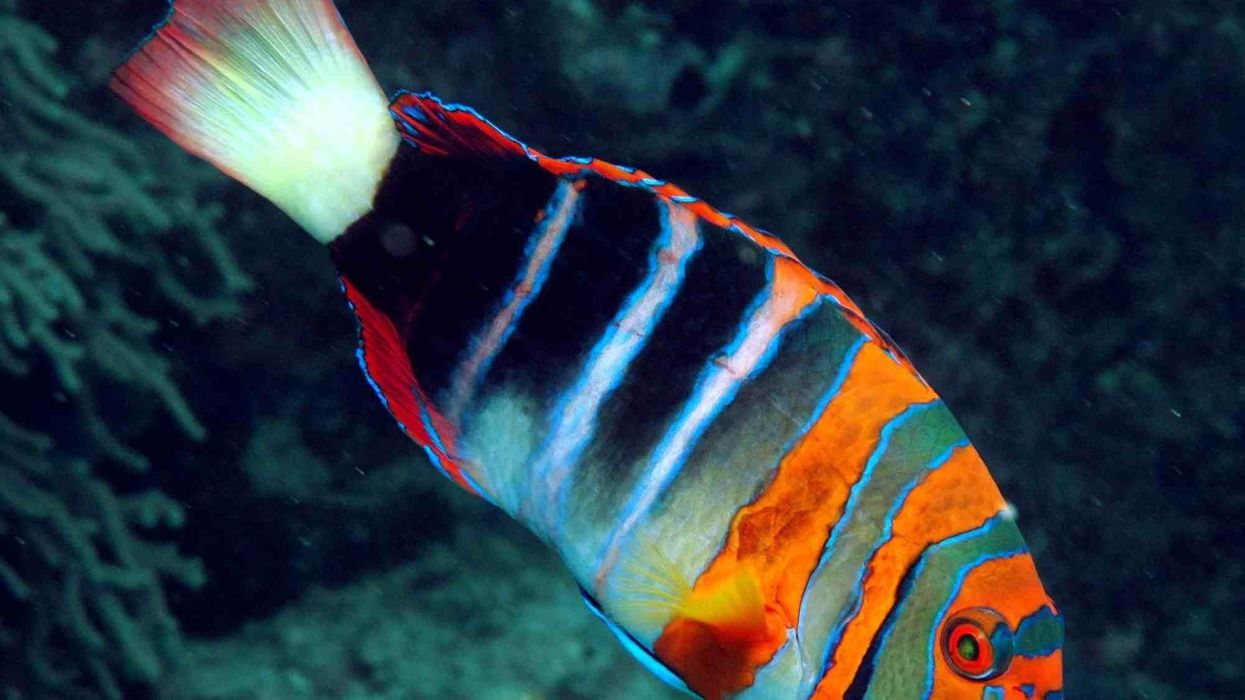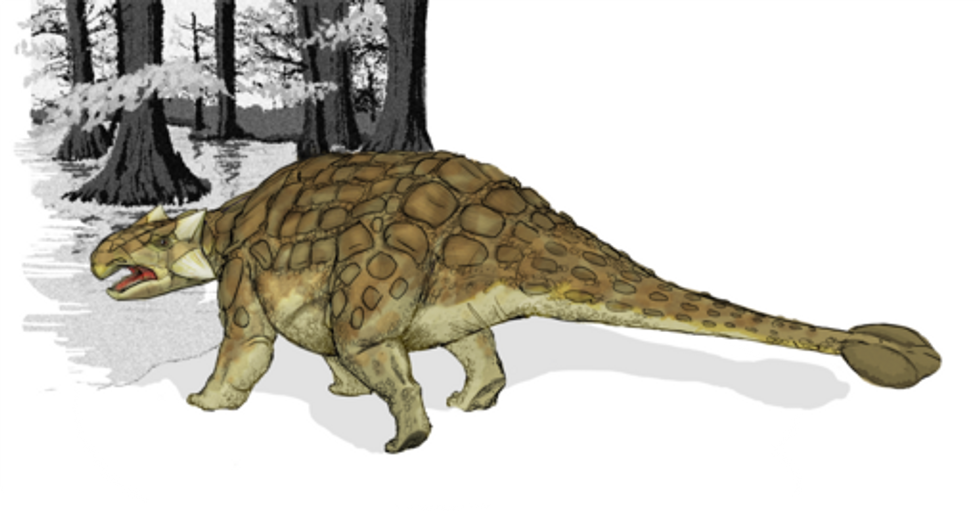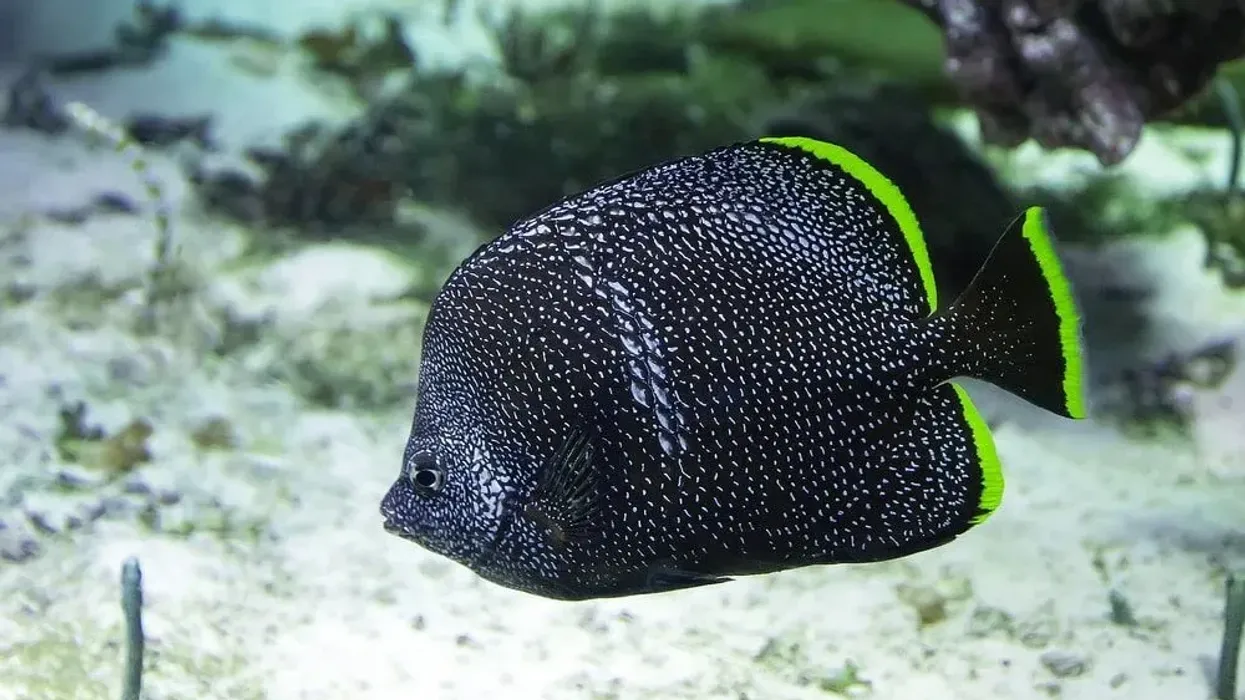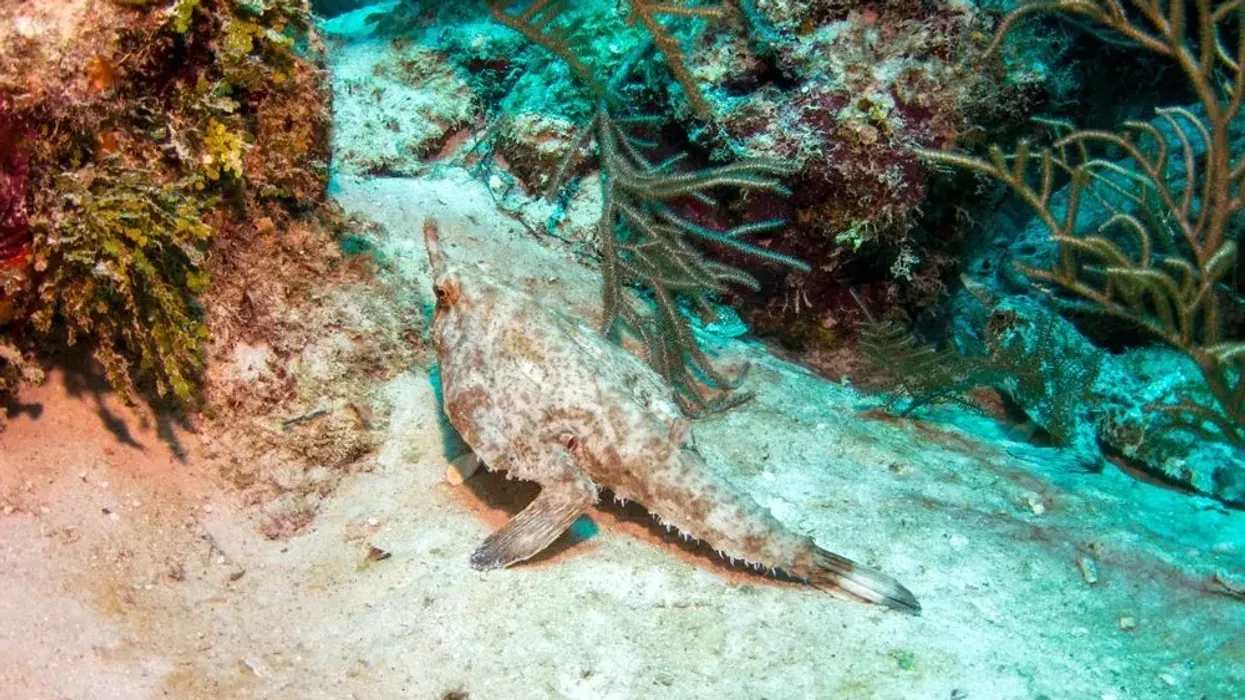The harlequin tuskfish (Choerodon fasciatus) can be one of the most strikingly beautiful additions to any tank or aquarium.
They have bright orange and white stripes with blue borders on their body, and unique blue teeth.
It is a type of wrasse, which is a family of over 600 species of small, bright-colored fish that feed on invertebrates.
Unlike much other fish of its family, it can easily adapt to a tank or an aquarium setting as it readily accepts marine food like shrimp, squids, and clams, among other frozen food for pet fish.
The distribution of this species is divided into two, with one range spreading across Ryukyus to Taiwan, and the other range from Australia to New Caledonia, including the Philippines and Indonesia.
It is reported that even though these fish are captured and sold for aquarium trade from both Australia and the Philippines, the fish from Australia adapt easier to a tank or aquarium and live for a long time, whereas the tuskfish from the Philippines end up not surviving in a tank for long.
They are collected quite heavily for the aquarium trade, but it is unclear whether this could have an adverse effect on their population.
Thus, they are listed as Least Concern by the IUCN Red List.
If you find this interesting and want to know more about other fish, check out our rockmover wrasse fun facts and humphead wrasse fun facts pages.
Harlequin Tuskfish Interesting Facts
What type of animal is a harlequin tuskfish?
The harlequin tuskfish is a type of wrasse, which is a kind of marine fish.
What class of animal does a harlequin tuskfish belong to?
Harlequin tuskfish (Choerodon fasciatus) belong to the class Actinopterygii, family Labridae, and genus Choerodon.
How many harlequin tuskfishes are there in the world?
The exact number of this tuskfish in the world is not known but it is said to be commonly found in Australia, New Caledonia, and some other parts of its range.
Where does a harlequin tuskfish live?
The harlequin tuskfish (Choerodon fasciatus) is found in the tropical and subtropical waters of the western Pacific Ocean. They can be found either in the reefs of Ryukyus to Taiwan or from Queensland, Australia to New Caledonia. They can also be found in Fiji, Japan, Palau, China, and the Philippines.
What is a harlequin tuskfish's habitat?
This species of wrasse mostly inhabits coral reefs and can be found up to 115 ft (35 m) deep in the sea. It is a solitary and territorial species, and so does not leave its range most of the time. It has also been found swimming in the open sea and seagrass beds in search of food.
When they are to be taken in as a pet, this tuskfish needs a tank or aquarium that can hold 75 gal (284 l) or more, as this species needs plenty of space to swim around.
It is also better to have some rockwork like visual barriers, caves, and overhangs, but not so much that these might impede their swimming.
However, these fish should not be put into a reef tank as they can attack and feed on the hermit crabs and snails present in it.
Who do harlequin tuskfishes live with?
The harlequin tuskfish are mostly solitary and shy but may form harems consisting of one male and several females. They are known to be aggressive when another tusk tries to invade their territory.
When preparing them for a tank or aquarium, special care has to be taken regarding their tankmates. They cannot be put with another tusk in the same tank, nor can they be put with smaller fish that can fit in their mouths.
Tuskfish can be kept with other large fish that are as aggressive and territorial as them, such as angelfish, tangs, puffers, eels, and triggers.
How long does a harlequin tuskfish live?
Although the lifespan of the harlequin tuskfish (Choerodon fasciatus) in their natural habitat is not known, this species can live more than 10 years in an aquarium, if given proper care in terms of their aquarium or tank conditions, feeding, and tankmates. The specimens collected from Australia are also likely to live longer than the specimens collected from Indonesia.
How do they reproduce?
C. fasciatus are protogynous hermaphrodites, which means that all individuals in their species are born as a female but can change their sex to a male when they mature. In a harem, if a male dies, the largest female will become a male.
Their eggs are released into the open sea, where they drift till finally settling on a reef or seagrass bed. These kinds of eggs are called pelagic eggs.
What is their conservation status?
C. fasciatus is classified as Least Concern by the IUCN Red List, owing to the fact that their population is considered to be very widespread in parts of the western Pacific Ocean, and there being no serious threats to this species.
Harlequin Tuskfish Fun Facts
What do harlequin tuskfishes look like?
This amazing tuskfish has alternating vertical orange and white bands on its body. These bands can also be green in some cases.
Each band is bordered with a blue line which gives it a very colorful look. Their fins are mostly tinted orange or red with a blue line surrounding them, and they have four small, protruding, tusk-like teeth that become blue with their age.
They have large eyes that can move independently so they can always look out for prey or predator.
Another remarkable characteristic of their body is the presence of eyespots on their fins. These are round, black spots that may protect the tuskfish from any predators by attracting them to less vulnerable parts of the fish.
How cute are they?
The harlequin tuskfish (Choerodon fasciatus) can definitely be considered very cute. Their scary blue tusks certainly cannot outweigh their bright and wonderful colors, and they can easily be the center of attraction of any aquarium.
How do they communicate?
There is not much evidence showing how or whether they communicate with each other. Their appearance is said to look aggressive to other fish so that they don't trespass into their territory. The male tuskfish is also believed to become very aggressive and territorial while defending their harem against other males.
How big is a harlequin tuskfish?
The harlequin tuskfish (Choerodon fasciatus) is a small to medium-sized fish, measuring about 8-17 in (20-43 cm).
How fast can a harlequin tuskfish swim?
There is no data available concerning the speed with which this species of tuskfish swims.
How much does a harlequin tuskfish weigh?
Though an average range of weight is not known, some specimens collected from New Caledonia weighed 9.6 oz (272 g).
What are the male and female names of the species?
There are no special names for the males and females of this species of wrasse.
What would you call a baby harlequin tuskfish?
Although there are no species-specific names for a baby harlequin tuskfish, generally, a baby fish can be called a fry when they hatch out of their eggs.
What do they eat?
The tusk is a carnivore and in the wild, its diet mainly consists of invertebrates like crabs, shrimp, mollusks, and worms.
When they are to be kept in a tank or aquarium, they can be fed a wide variety of frozen marine foods meant for pet carnivore fish such as fish, krill, prawn, shrimp, plankton, squid, octopus, as well as gelatin formulas, and pellets.
These frozen marine foods can benefit the tusk greatly when kept in an aquarium.
However, at first, there is a chance that the tusk might refuse to eat. It is advisable to keep trying to feed it in this case, as fish cannot go more than a week without eating.
Some species like moray eels, sharks, and other larger fish are predators of the tusk and might attack and eat them in the wild.
Are they dangerous?
No, the harlequin tuskfish (Choerodon fasciatus) is not dangerous to human beings, though it might attack small invertebrates if it is placed in the same aquarium.
Would they make a good pet?
Yes, the tusk is known for being highly adaptable to an aquarium environment and can live a long, healthy life there. However, there are many things to take care of regarding their tank size, water quality, diet, and tankmates.
The temperature of their tank should always be 77-80 F (25-26.6 C) and the tank should be well filtered and circulated. Ideally, there should only be one tuskfish in a tank but it is possible to keep more in a bigger tank if the fish are of a smaller size.
Did you know...
It has been said that a specimen collected from Australia, other than being highly adaptable to life in an aquarium, also has much more vibrant and brighter colors than a specimen collected from anywhere else.
Is the harlequin tuskfish reef safe?
No, it is not safe to put C. fasciatus in a reef tank. Although it won't nip at the coral species present in the tank, it will attack other marine invertebrates like crustaceans and mollusks which usually live in a reef tank, and are a big part of the tusk's diet.
The water quality of the reef tank can also be harmed as the tusk has a large waste production.
How did the harlequin tuskfish get its name?
The harlequin tuskfish (Choerodon fasciatus) is named for its harlequin-like colors and the four small, protruding teeth that look like tusks.
Here at Kidadl, we have carefully created lots of interesting family-friendly animal facts for everyone to discover! Learn more about some other fish from our lionfish facts and clown triggerfish facts for kids pages.
You can even occupy yourself at home by coloring in one of our free printable Harlequin tuskfish coloring pages.









